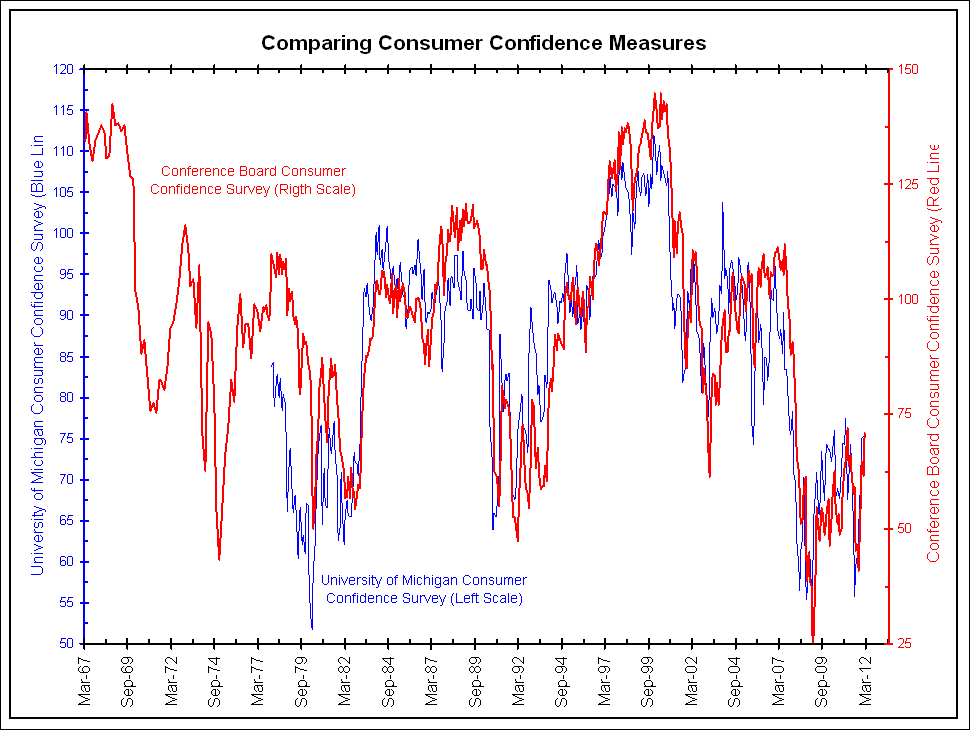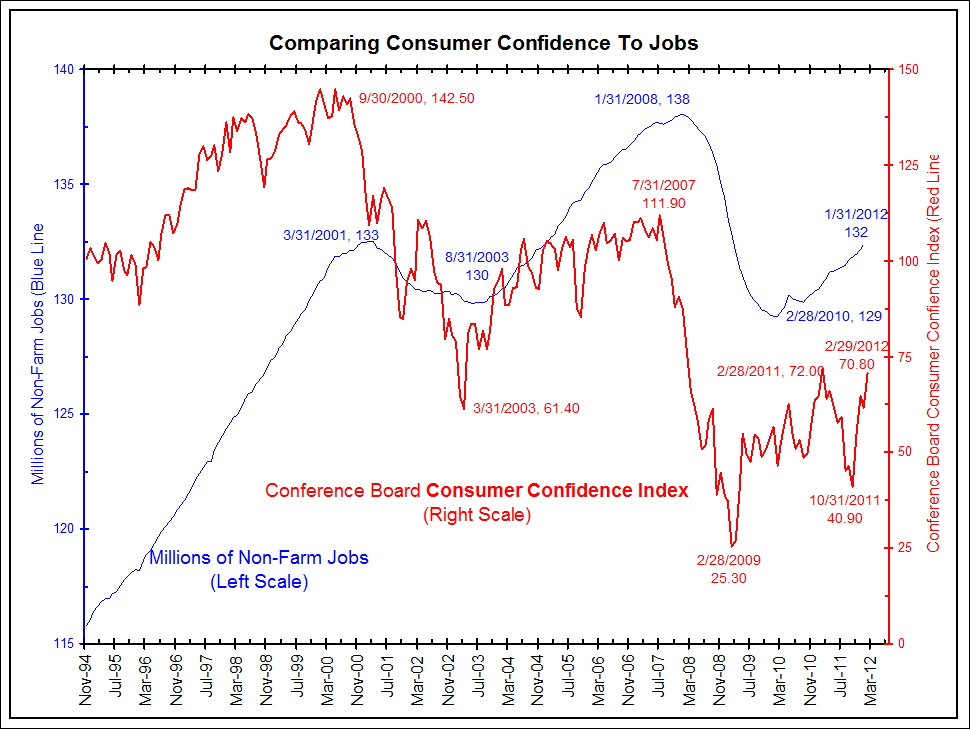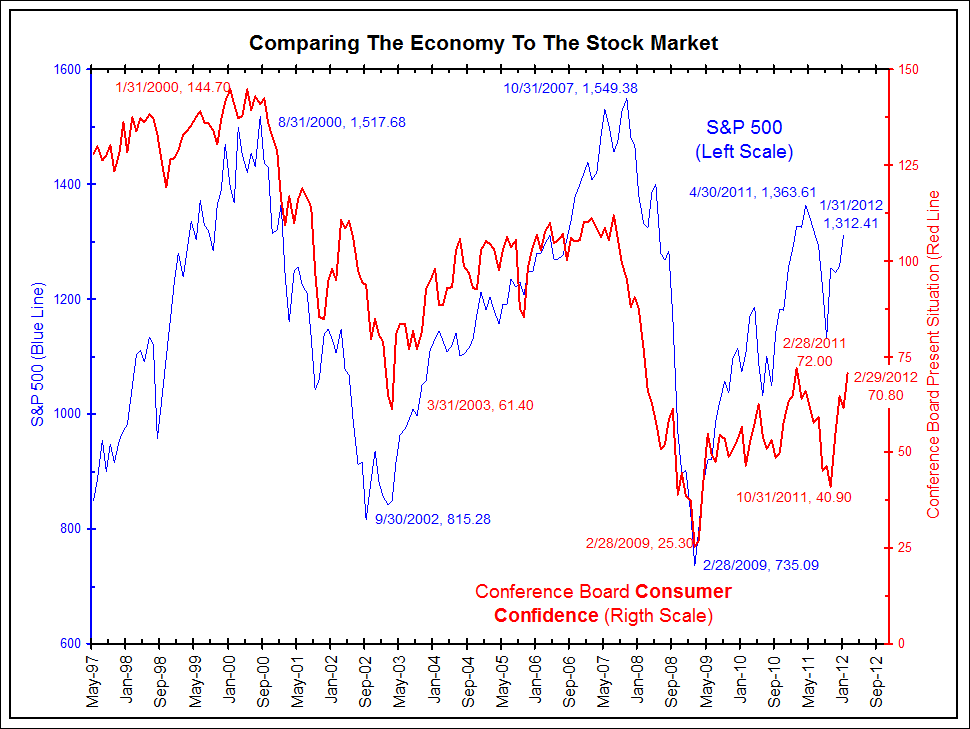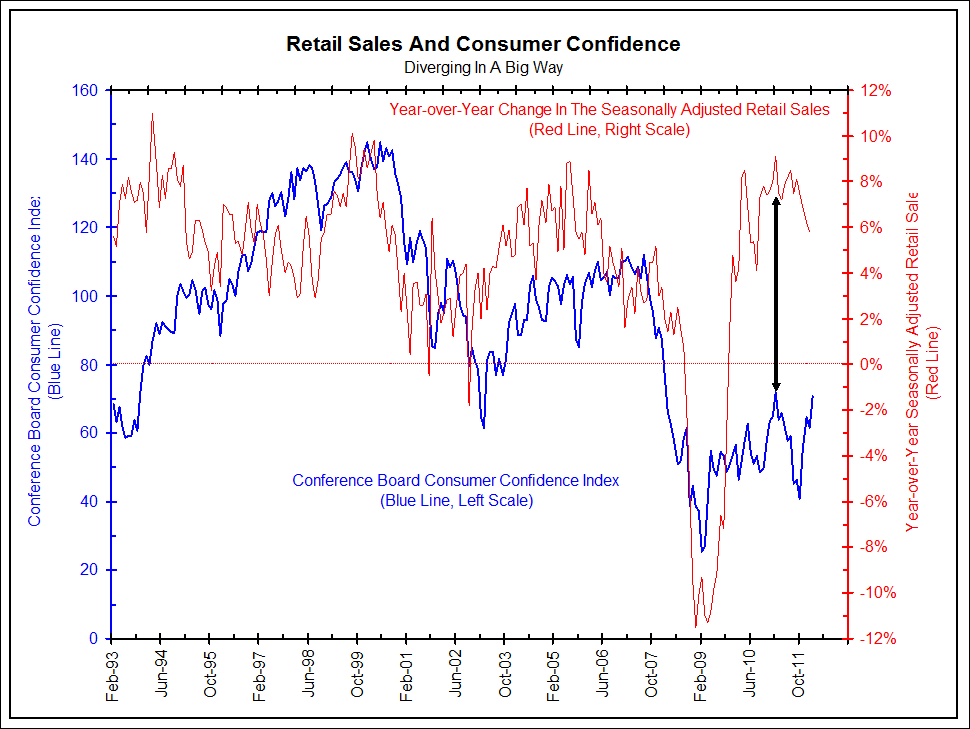Bloomberg.com – U.S. Consumer Sentiment Climbs Toward ’08 Levels
Consumer-confidence measures are climbing out of the depths reached during the last recession as employers step up hiring and stocks rally, signaling Americans may be poised to increase spending. The Conference Board’s gauge in February increased to the highest level in a year, figures from the New York-based research group showed today. The Bloomberg Consumer Comfort Index rose to an almost four-year high in the week through Feb. 19, and the Thomson Reuters/University of Michigan measure of consumer sentiment increased to 75.3 in February, the sixth straight monthly gain and the longest advance since 1997. The last time the University of Michigan index stayed above 75 for more than two months was in the period through January 2008, a month after the end of the previous expansion. Consumers are likely to grow more optimistic as the two-year recovery boosts employment and incomes further, said Dean Maki, chief U.S. economist at Barclays Capital Inc. in New York. “The major driver of the improvement in confidence has been the labor market,” Maki said. “We would expect consumer confidence to continue trending higher if the labor market continues to improve as we expect.” Employers have added 1 million workers to payrolls since July, according to Labor Department data. During that same period, the unemployment rate dropped by 0.8 percentage point, the biggest decline since 1984. The rate was 8.3 percent in January, the lowest in almost three years.
Comment
We have called consumer confidence the world’s most useless economic statistic. The economists that construct or track consumer confidence disagree. They insist it follows labor conditions and gives us a good indicator of what is happening to the jobs market.
The next chart shows consumer confidence and the total number of non-farm payroll jobs. At first glance it looks like these two indicators seem to have a relationship.
For the record, the conference board index is calculated by asking consumers a series of five questions:
1. Appraisal of current business conditions
2. Expectations regarding business six months hence
3. Appraisal of current employment conditions
4. Expectations regarding employment conditions six months hence
5. Expectations regarding total family income six months hence
Respondents answer either positive, neutral, or negative to each question, and an index is then calculated according to the responses of all five questions.
If the overall consumer confidence measure is supposed to tell us about the labor market, then perhaps a closer look at the employment conditions sub-component is in order. This is shown below.
To be perfectly honest, neither the overall consumer confidence index nor the employment conditions index track the number of non-farm jobs all that well.
Stocks And Confidence
So what is consumer confidence really measuring? As the chart below shows, the stock market provides a much better fit to consumer confidence than the number of non-farm jobs.
Why do these two measures track each other so closely? See the questions that are asked again (remember the answers are positive, neutral or negative):
1. Appraisal of current business conditions
2. Expectations regarding business six months hence
3. Appraisal of current employment conditions
4. Expectations regarding employment conditions six months hence
5. Expectations regarding total family income six months hence
To most Americans these questions are too abstract. It is like asking them, “what is the weather in the United States and what do you expect the weather of the United States to be?” How does one answer this? You would probably look out the window and describe what you see.
The consumer confidence questions are being answered in a similar manner. Respondents don’t really know how to answer such abstract questions as business and employment conditions, so they describe what they think is the ultimate economic indicator, the stock market’s recent movements. While spikes in gas prices or other economic events (i.e., 9/11, “The Great Recession”) will supersede this method at times, most of the time the stock market is used to formulate answers to the above questions. In the last few months the stock market is up strongly, so it should not be a surprise that consumer confidence is up as well.
Since we do not need an indicator to highlight recent stock market performance, the Consumer Confidence Index becomes rather useless as an economic indicator. If it measures nothing more than recent stock market performance, economists should not be puzzled by the lack of a relationship between something like retail sales and consumer confidence. Consumer confidence and retail sales no longer relate.
Source: Bianco Research)







What's been said:
Discussions found on the web: